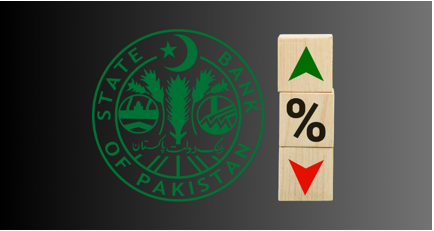INP-WealthPk
Moaaz Manzoor
A sharp decline in foreign investment in treasury bills following a policy rate cut by the State Bank of Pakistan (SBP) reflects the ’investors’ preference for higher-yield markets and concerns over the currency risk, potentially increasing the government’s reliance on domestic institutions for funding, reports WealthPK.

The foreign investment in market treasury bills (T-Bills) plummeted, with investors withdrawing $149 million in January 2025. The decline follows a cumulative 10 percentage-point cut in the policy rate by the State Bank of Pakistan (SBP), reducing it from 22% in June 2024 to 12% in January 2025. This move, aimed at controlling inflation and stabilizing the external account, has also led to a drop in short-term government securities’ profit margins, with yields on 3-month and 6-month T-Bills falling to 11.5854% and 11.4048%, respectively.
Consequently, the foreign investors continued withdrawing funds from short-term government papers, resulting in a net outflow of $32.4 million from T-Bills by January 24, 2025. Meanwhile, the Pakistan Investment Bonds (PIBs) saw no foreign inflows and recorded an outflow of $0.875 million during the same period.
Speaking with WealthPK, Muhammad Saeed Khalid Siddique, chief economist and market strategist at Adam Securities Limited, noted that as the interest rates declined from 22% to 12%, the foreign investor interest in money markets, particularly T-Bills, diminished due to the lower returns. Instead, the investors have shifted toward the equity market, where monetary easing has generated approximately 46% gains since the start of FY25.
He pointed out that the government’s target to raise Rs6.7 trillion — of which Rs3.93 trillion was expected from the money market — will likely improve liquidity, but it could simultaneously reduce the liquidity available to the investors. Ali Najib, Head of Equity Sales at Insight Securities, highlighted that the sharp 87% drop in foreign investment in T-Bills following the SBP’s rate cut from 13% to 12% reflected broader investor concerns.
He explained that the foreign investors, particularly those engaged in carry trades, sought high-yield and stable markets. With the Fed maintaining higher interest rates, Pakistan’s bonds have become relatively less attractive. Additionally, the investors consider currency risks alongside interest rates, and a lower policy rate may weaken the rupee, reducing the real returns when converted to the US dollar.
Given Pakistan’s history of currency depreciation, this remains a significant factor in investor sentiment. Najib further noted that with the government planning to raise Rs6.8 trillion through upcoming auctions, reliance on domestic banks and institutions may increase. However, the banks may demand higher yields to compensate for the inflation risks and ongoing policy uncertainties.
The shift in foreign investment behavior signals a broader adjustment in Pakistan’s bond market dynamics. While the lower policy rates aim to spur economic activity, they also pose challenges in retaining foreign capital, particularly in short-term instruments. The government may need to balance its monetary policy adjustments with strategies to maintain investor confidence.
Credit: INP-WealthPk




